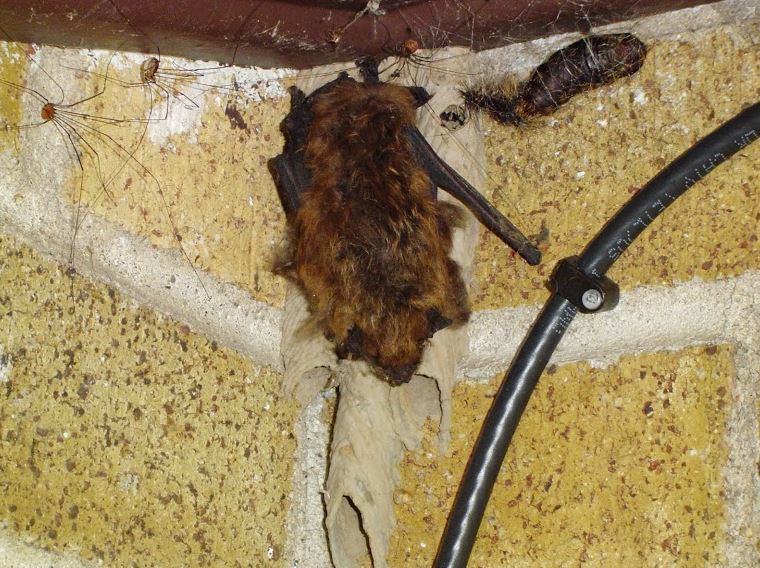Some bats thirst for blood. Just not of the human variety. Even so, if you discover a bat in your living quarters or a colony in the attic, you should contact the professionals at Skedaddle for humane bat removal in Whitby. Bats are incredibly important to many types of ecosystems. They provide several benefits to humans, and, yes, one of them is that they prefer to dine on mosquitos. Is that all they eat? There are 18 bat species in Canada, and they all eat more than just mosquitos.
Canadian Bats Are Insectivores
All of the species in Canada eat insects (in other parts of the world, some species eat pollen, nectar and fruit). They take care of a lot of the flying bugs that people think of as pests. Bats eat mosquitos, beetles, moths, mayflies, midges and flying ants, to name a few. This winged mammal is nocturnal, so it does all of its eating at night. Most insects that are also active at night are fair game.
Insect-Eating Bats Have Big Appetites
Bats have an incredible appetite. A little brown bat, which is common in our area, can consume up to four to eight grams of insects in a single night. This is about the same weight as a grape or two. That might not seem like a lot of insects, but if you consider that this bat’s body is about the size of a human thumb, it gives you a bit of perspective. A nursing female eats even more than that. In some species, they can take an estimated 4,000 insects out of circulation in a single night. If you think you get eaten alive by mosquitos now, imagine what it would be like if we didn’t have bats! Many of these insects are also harmful to food crops, so bats provide farmers with a lot of protection from crop-destroying pests.
Bats Catch Their Prey In-Flight
When you’re standing outside looking up into the night sky and spot something flying around the lamplight, you can tell right away if it’s a bat. One of the bat characteristics that gives people the creeps is their erratic flight patterns. There really isn’t anything spooky about it, though. Bats’ wing structure is different than bird’s, and it allows them to maneuver easily in flight, making it easier for them to catch their prey.
Though they can see, bats use echolocation to detect prey movements. It’s more efficient than sight and allows them to track the insect more closely. When a bat is within range, it captures the insect within the membrane of its tail or wings then ducks its head down to take the little critter into its mouth. The pattern of flight you observe is simply the bat chasing down, capturing and eating its dinner.
Cave-Dwelling Bats in Trouble
Many species of bats around the world hibernate in caves. In Ontario, five out of our provinces eight species take shelter in caves. These species are in serious trouble from a disease called white-nose syndrome. The source of this deadly disease is a fungus that grows in cold temperatures, infecting bats when they are in their most vulnerable state.
So far, WNS has claimed the lives of at least seven million bats since the disease was discovered in 2006. The loss of so many of these important animals harms our ecosystems. It is estimated that the loss of one million bats results in as many as 1,320 metric tons of insects that don’t wind up as a bat meal.
Humane Bat Removal Whitby
Bats are protected under the Fish and Wildlife Conservation Act, making it illegal to kill or harm these animals, even when they are in your home. For your safety and theirs, we do not recommend attempting removal on your own. Skedaddle technicians have the expertise required to safely and humanely relocate bats found in your house. Contact us today to schedule services.



